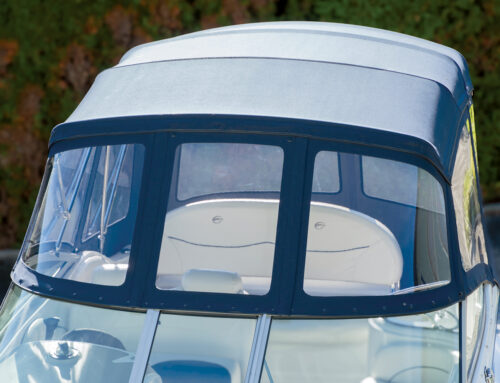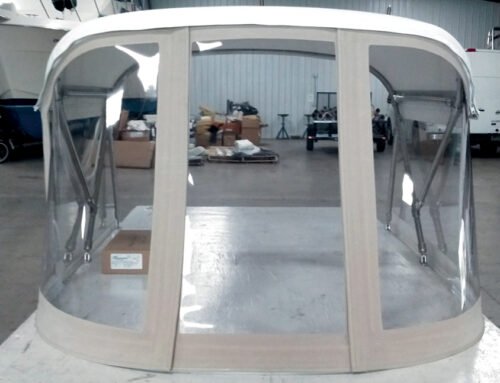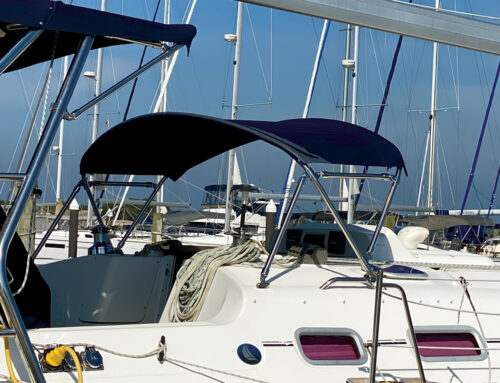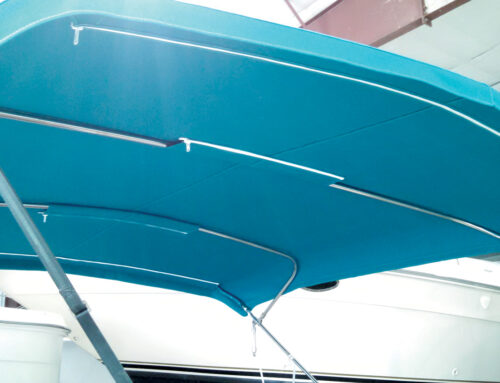Award-winning travel covers
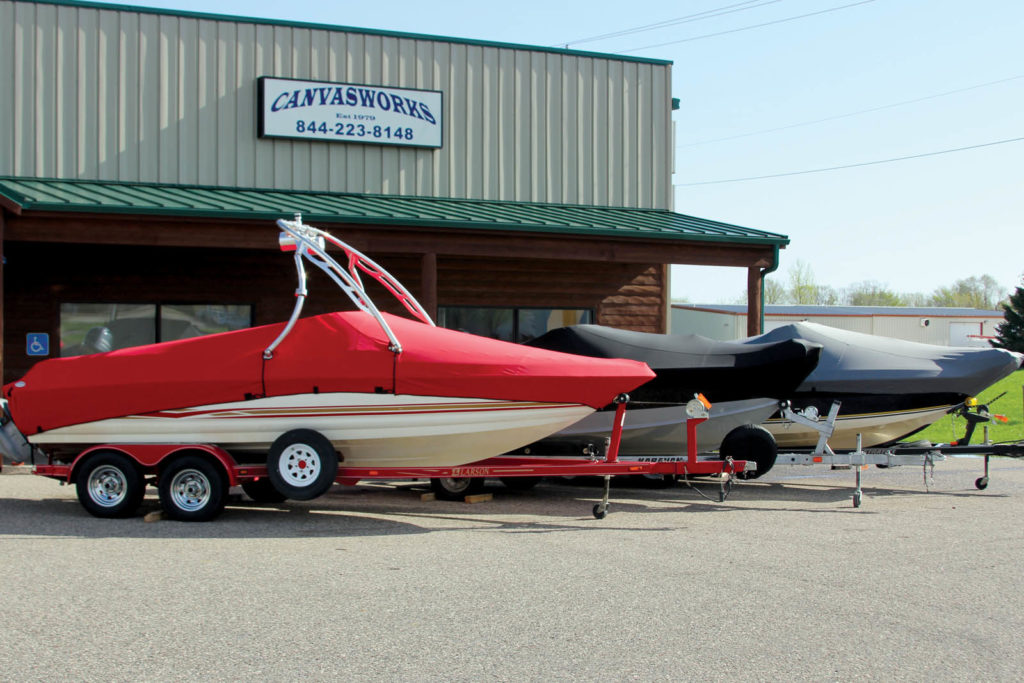
Fabricating travel covers presents a unique set of challenges for the marine fabricator. The cover needs to withstand highway traveling speeds, crosswinds and road debris without rubbing or otherwise damaging the boat. The correct fabric choice, close tailoring and proper reinforcing all play a part in preventing unnecessary wear to the cover and damage to the boat. In most cases, the exception being a pontoon cover, the travel cover also needs to function as a mooring or summer storage cover, which means its water-shedding capabilities need to be considered. This article will examine the pros and cons of each type of travel cover and go over some tips for fabricating award-winning travel covers.
Cover styles pros and cons
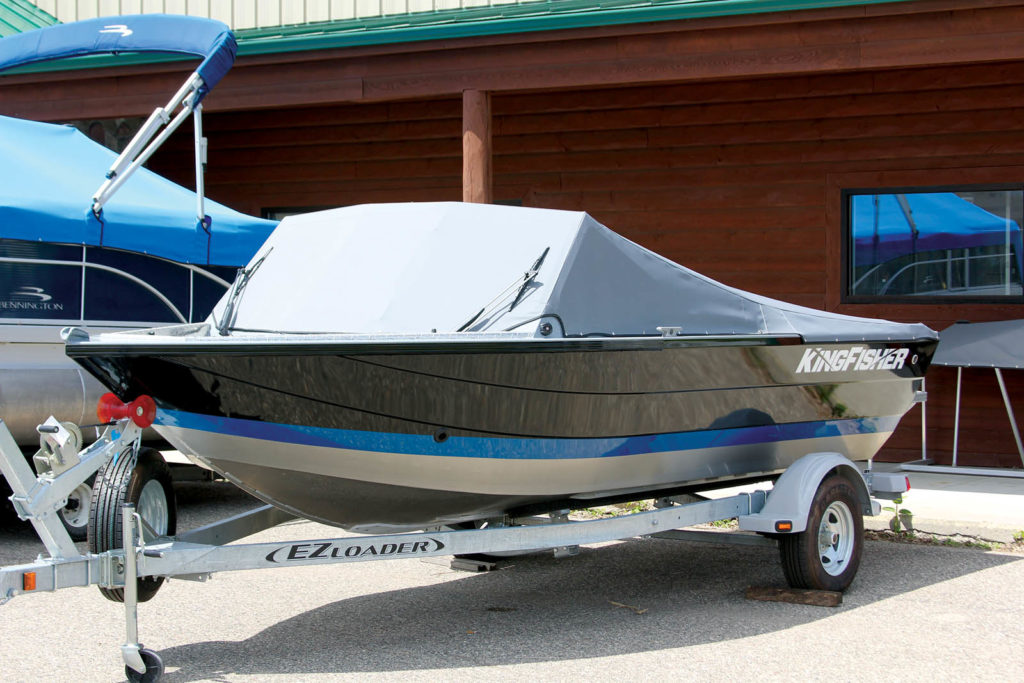
Snap-on covers (Photo 1) are a popular option because they are the most suitable cover for clients to use on the water since the cover can be installed from inside the boat. However, all of the tension needed to withstand highway speeds or shed water effectively must be gained by applying finger pressure. While there are tools on the market to make it easier to install snap-on covers, this is an aspect to consider for customers with weaker hands.
In addition, a limited amount of the boat is covered, which decreases the protection from road debris when traveling. Finally, due to the small tension points, snap-on covers are not as durable as other types of covers. They tend to wear out more quickly and end up flapping in the wind, damaging both themselves and the boat. We commonly see this in our canvas repair side of the business or when fitting a new cover to a boat that has previously had a snap-on cover installed.
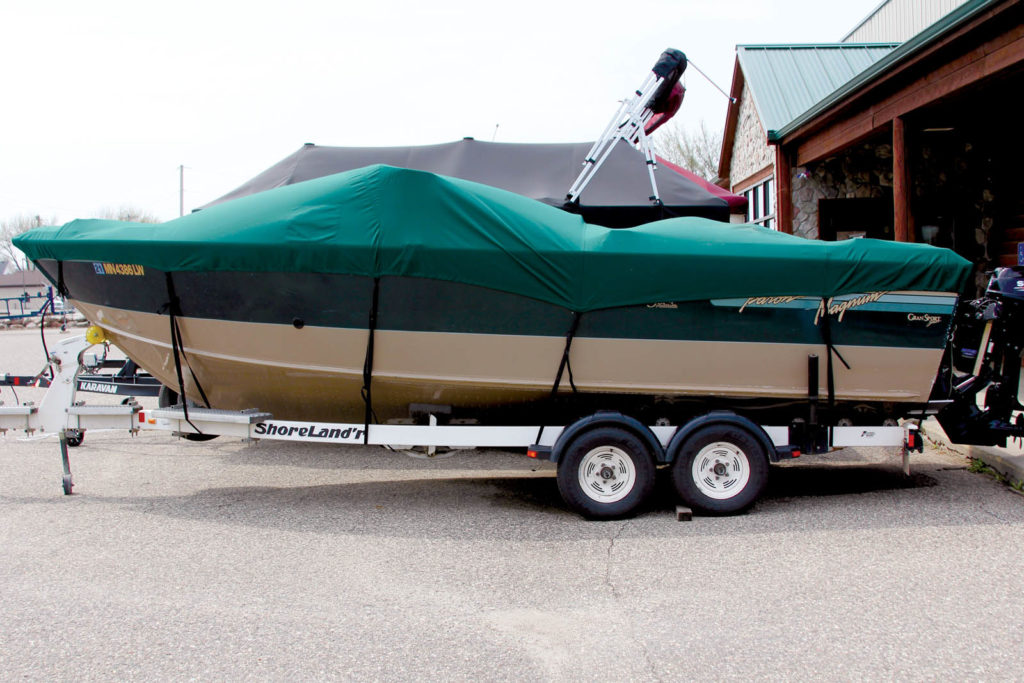
Tie-down covers (Photo 3) are very effective travel covers because they cover much more of the boat than a snap-on cover. In addition, they are tensioned from outside of the boat using rope tension knots. Since the tension created for traveling and shedding water is spread throughout the cover and not focused on small snaps, tie-down covers require far less maintenance over their lifetime than snap-on covers. Keep in mind that none of these positives apply to generic tie-down covers. Off-the-shelf covers (Photo 2) should not be used for travel because they are not fit to the boat and will damage the boat because they will flap when traveling.
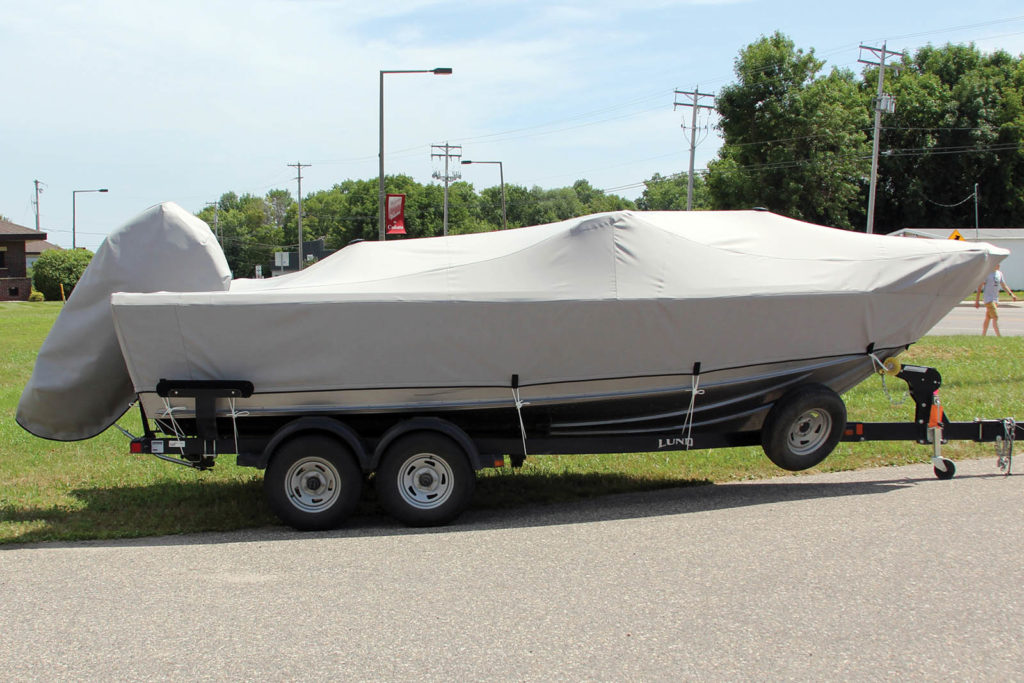
On the downside, tie-down covers are unsuitable for use on the water because they need to be tied down to the trailer. Furthermore, some boat owners dislike the time-consuming process of tying the cover down with the proper rope tension knots. They will get around this by replacing the ropes with bungee cords, which allow the cover to flap in the wind created by traveling.
Ratchet strap covers (See lead photo) are great for travel because they are built to withstand the pressure of high speeds. The cover tension encompasses the boat’s perimeter, so there are no tension points where damage to the cover can occur. In addition, they are extremely quick and easy to install. A ratchet strap cover for your typical 20-foot fishing boat can be installed in under three minutes. A cover that goes on quickly is a cover that a customer will be more likely to use every time. These covers excel at protection during travel because they generally cover more of the boat, especially at the front.
The downside of ratchet strap covers is the expense. Due to the time involved in fitting a ratchet strap cover, these covers tend to be significantly more expensive than their counterparts. Additionally, ratchet strap covers cannot be used on the water unless you can access the boat from the sides or the back.
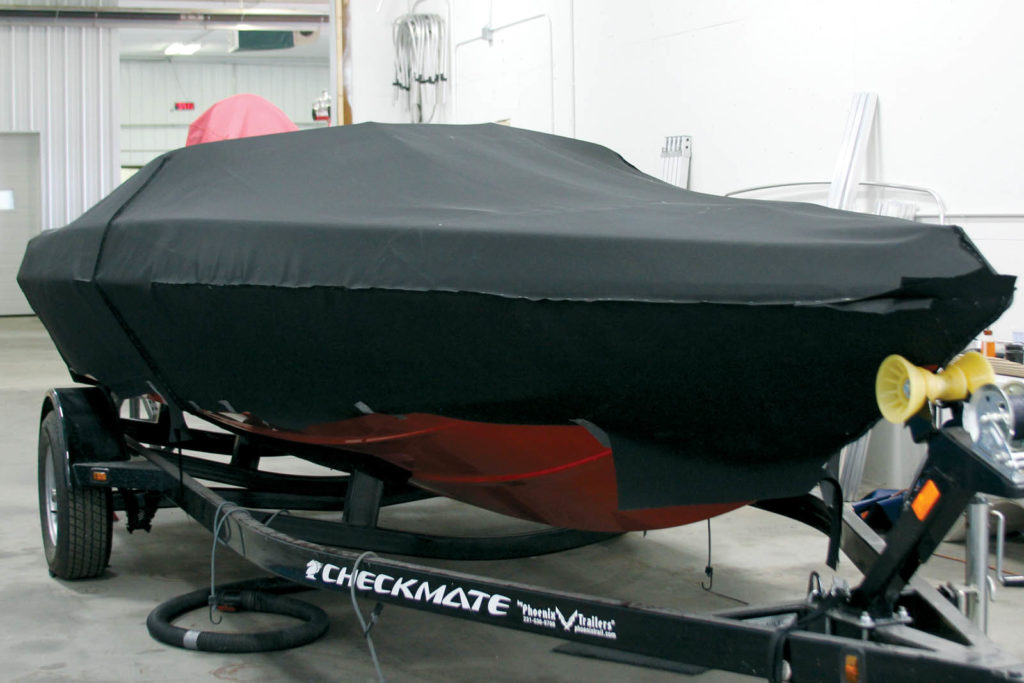
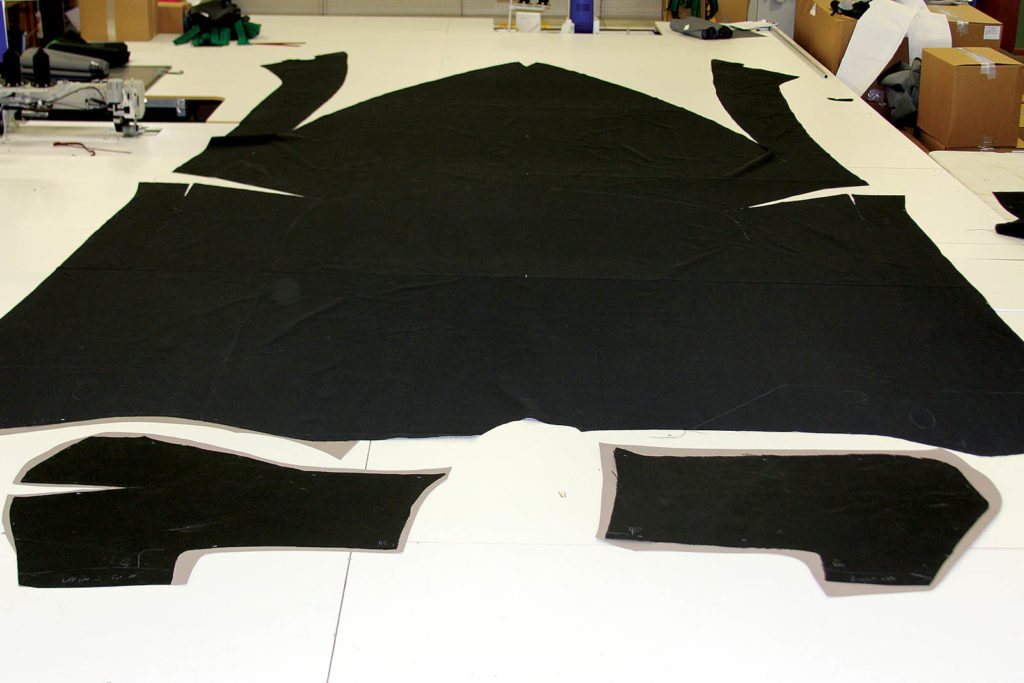
Fabrication tips
No matter what type of travel cover you are manufacturing, there are three essential factors to consider in order to create the best cover possible: type of material, close tailoring and proper reinforcing. Failing to carefully consider any of these can result in a travel cover that doesn’t properly perform its job.
Choosing the correct fabric is the first consideration. The material must be durable enough to withstand highway speeds, not tear and stand up to road debris. At Canvasworks, we use Top Notch® from Marlen Textiles for most of our travel covers. It is an 11.5-ounce solution-dyed polyester that is much tougher than other fabrics. However, any material with a high tear strength, abrasion resistance and the ability to withstand the sun can be used for a travel cover. Avoid cheap and lightweight fabrics that will not stand up to road use.
When you’re fitting the cover to the boat, it is essential to tailor it as closely as possible to the boat’s lines. One of the key points to remember is to remove as much excess fabric from the cover as possible. Fabricators commonly use a patterning material when fitting a boat for a cover. At our shop, we use a fabric welded blank instead (Photo 4). Doing so saves time and removes the inevitable minute changes that occur when a patterning material is laid over a fabric blank and then cut. In addition, fitting with the actual fabric allows you to see how the fabric lies over the boat, which will help you achieve a more tailored fit.
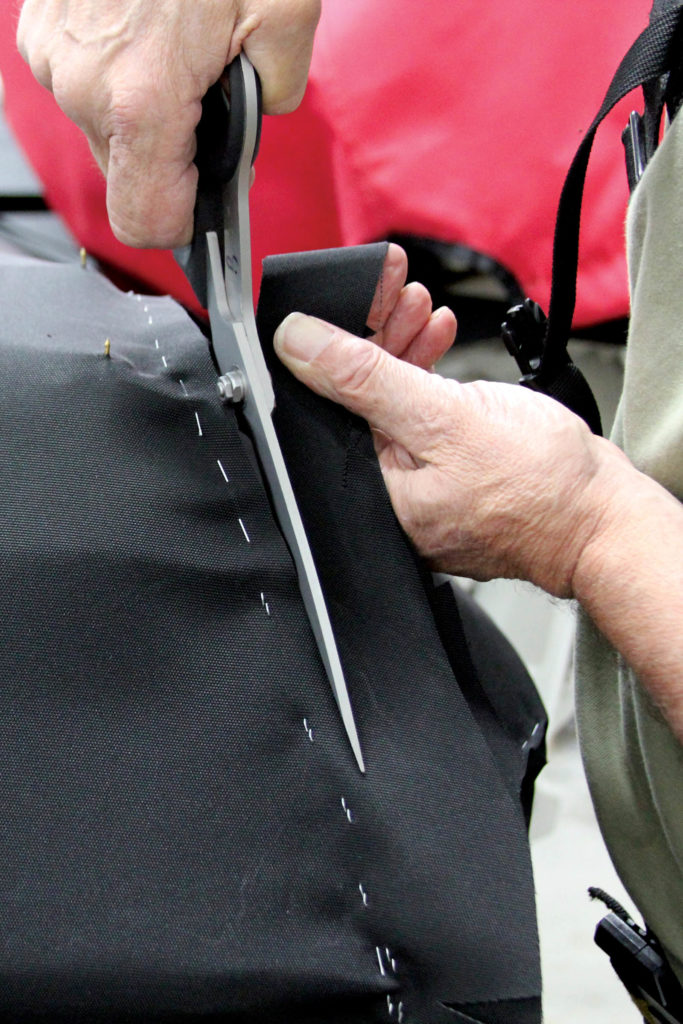
Once the blank has been laid over the boat and the fitting mechanism, the blank is tailored to the boat using a stapler and scissors (Photo 5). Before removing the fitted blank from the boat, add any sewing marks for tie-downs and other options. Once again, this allows you to tailor the cover close to the boat and saves time. Once the cover comes off the boat, there is very little extra cutting for your fabric shop to do before the cover moves to the sewing table (Photo 4b).
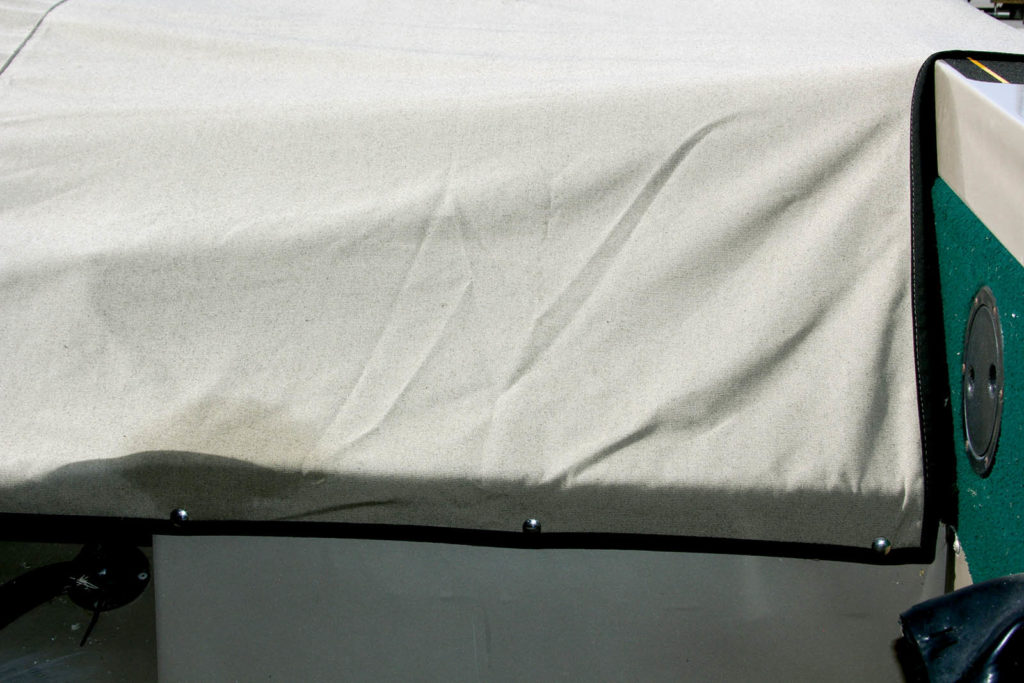
Correct reinforcing is the third piece of the puzzle. If the travel cover isn’t reinforced correctly, it cannot withstand the rigors of road travel (Photo 6). Reinforcing provides extra strength where the cover is more likely to wear, around protrusions on the boat, or on areas that will take extra tension. The areas we pay special attention to reinforcing include the trolling motor, bow, windshield and the back 18 inches of the boat (Photos 7-8). Depending on the exact style of the boat, other areas may need to be reinforced as well.
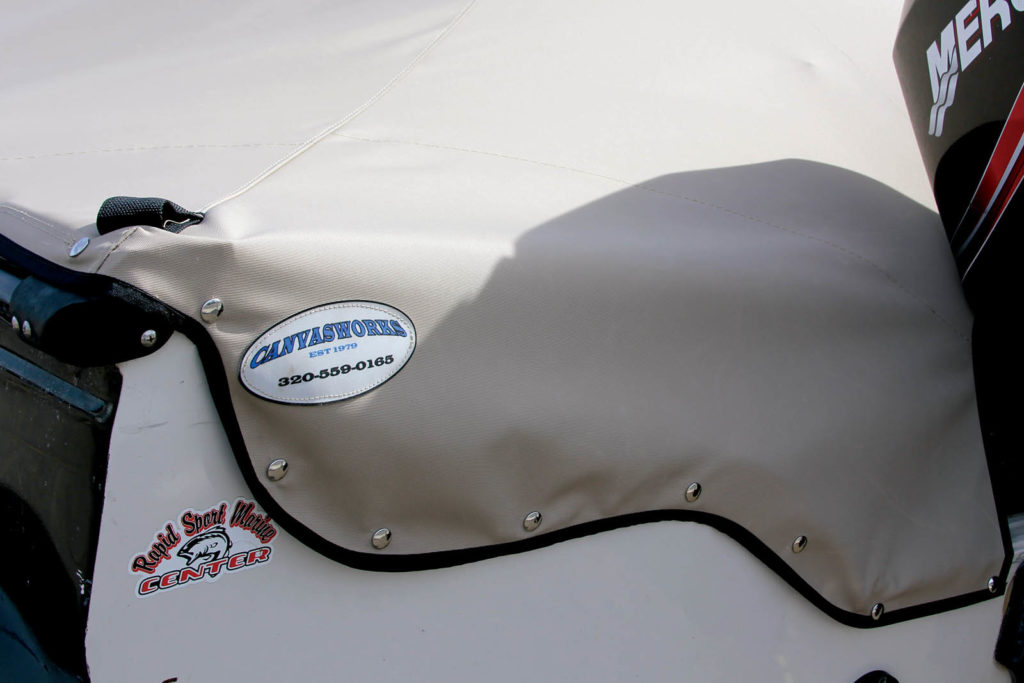
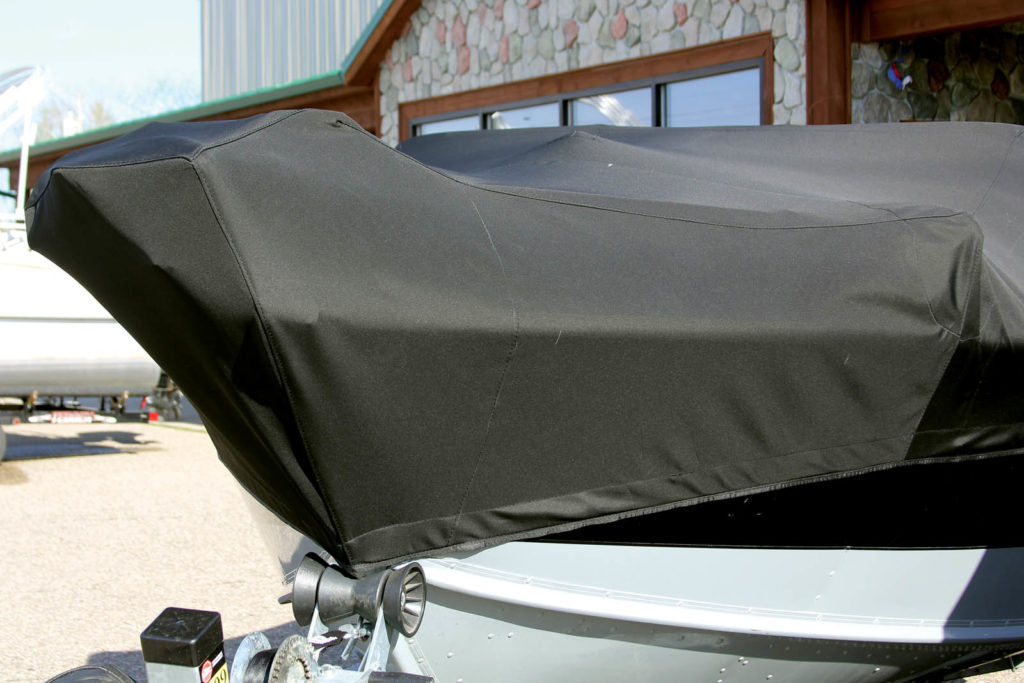
Travel covers make up a significant portion of any fabricator’s business, and quality travel covers increase your customers’ confidence in your abilities, making them more likely to recommend you to family and friends. By considering the three factors of fabric choice, tailoring and reinforcing, you will be able to create higher-quality travel covers.
by Jennifer Smith, business manager, Canvasworks Inc. Interviewing Duane Smith Jr., owner of Canvasworks Inc.
Duane Smith Jr. has owned and operated Canvasworks Inc. for 43 years. He was professionally trained as a U.S. Navy PR. As soon as his son, Duane Smith III, was old enough to learn, he began fabricating boat covers and other marine products. Together they fabricate boat covers using traditional hand-fitting techniques and digital technology to produce award-winning boat covers. They have been the recipients of numerous MFA Fabrication Excellence Awards, including a 2021 Award of Excellence and an Outstanding Achievement Award in the Travel/Full Covers category.
 TEXTILES.ORG
TEXTILES.ORG 


